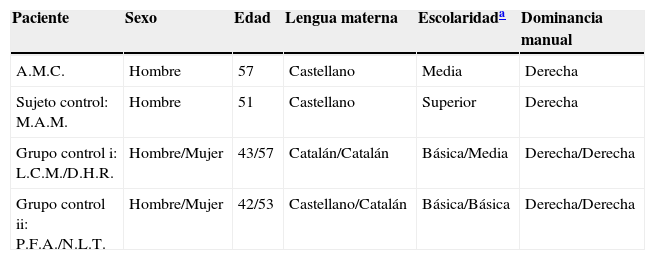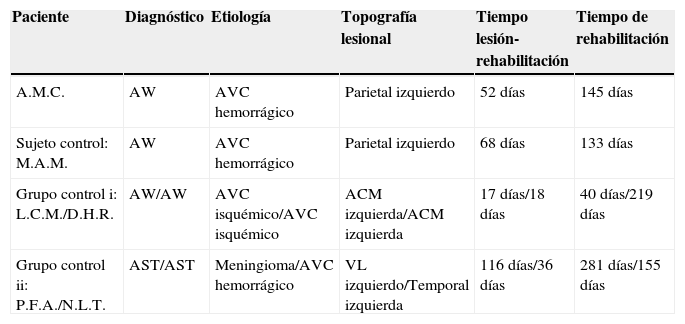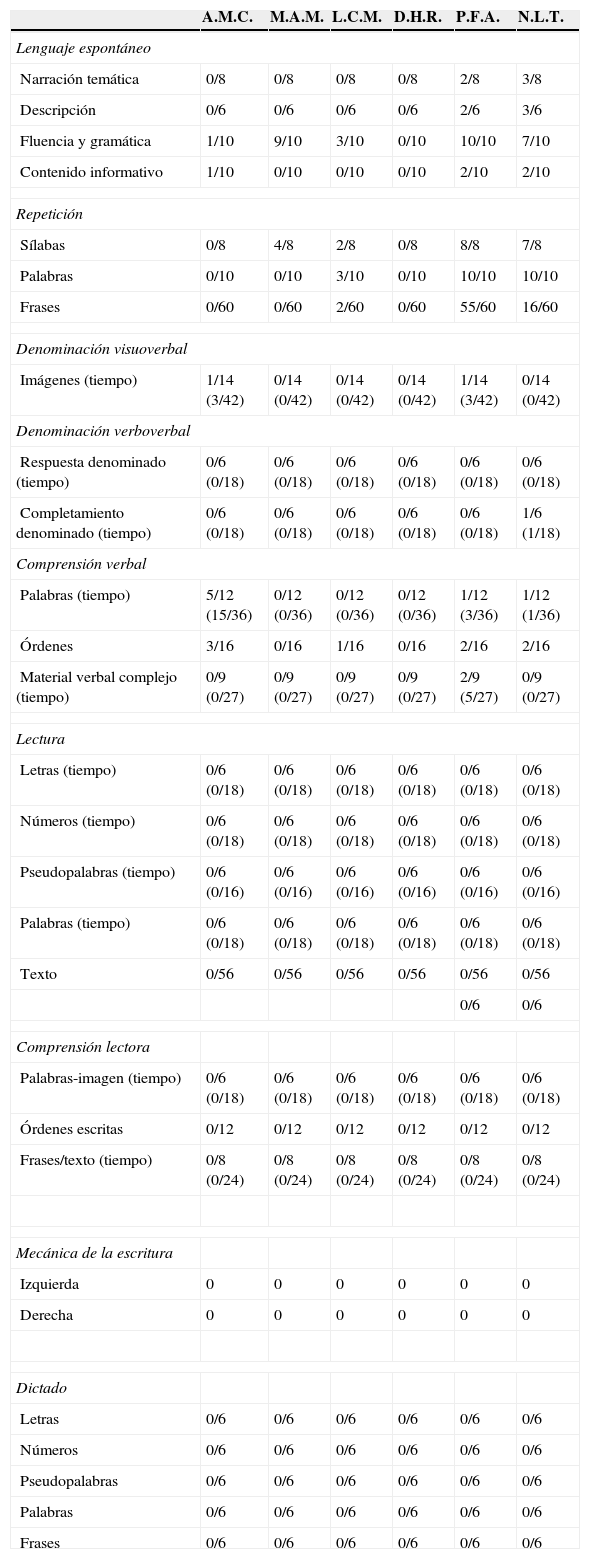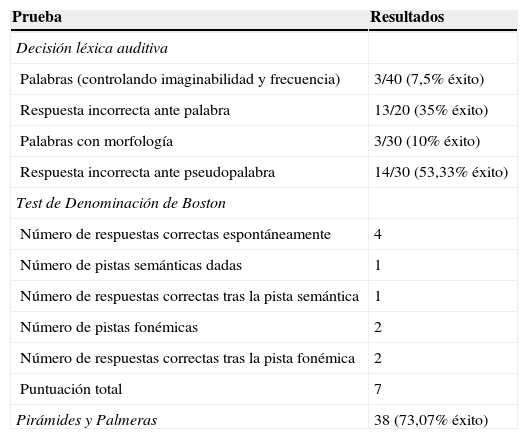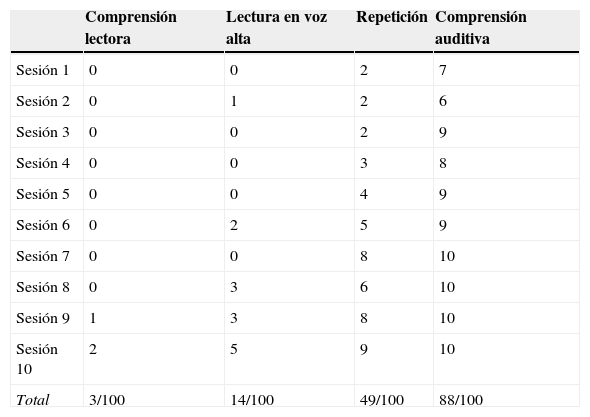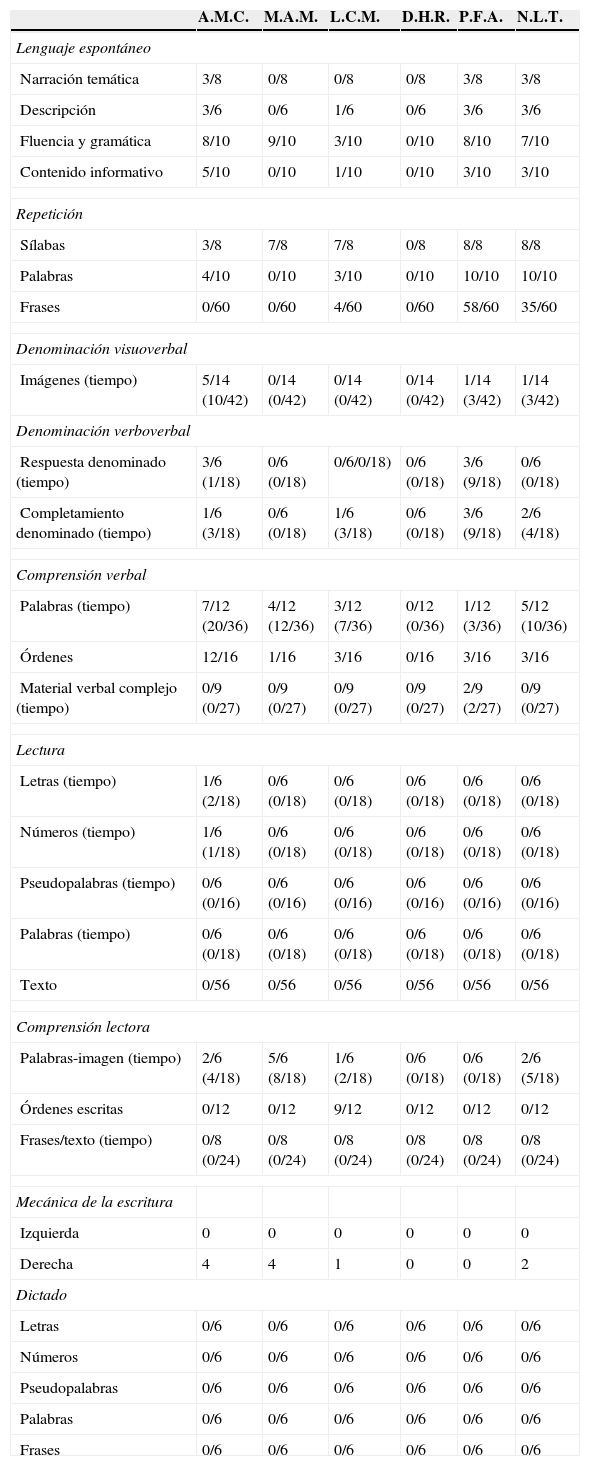La afasia es un trastorno del lenguaje que en la mayoría de los casos provoca una incapacidad para la comunicación, lo que implica un hándicap no solo para el paciente sino para el entorno familiar. La rehabilitación del paciente se considera, entonces, vital para suplir esta disfunción comunicativa. La terapia logopédica convencional es útil, pero en casos de afasias con graves alteraciones es lenta. Para subsanar este problema, en el ámbito de la afasia de Wernicke se desarrolló el «tratamiento para la afasia de Wernicke» (TAW), que se mostró efectivo en un conjunto específico de candidatos.
ObjetivoValorar el TAW en pacientes diagnosticados con afasia de Wernicke y que presentan una sintomatología grave, aunque no sean candidatos específicos al tratamiento original.
MétodoSe realizaron 12 sesiones del TAW con un paciente afectado por afasia de Wernicke y se comparó la actuación pre y postratamiento de este paciente con un grupo de pacientes con afasia de Wernicke (uno de ellos con igual etiología y localización) y otro grupo de pacientes con afasia sensorial transcortical (afasia de Wernicke tipoii).
ResultadosLos resultados muestran, en casi todos los ámbitos verbales analizados, una mejora mayor en el paciente que realizó el TAW respecto al resto de pacientes que siguieron una terapia logopédica convencional.
ConclusionesA partir de los resultados obtenidos se concluye que el TAW es un tratamiento terapéutico útil para toda clase de pacientes con afasia de Wernicke, y no solo para los candidatos propuestos en la rehabilitación inicial.
Aphasia is a language disorder which causes, in most cases, an inability to communicate, which implies a handicap not only for the patient but also for the family environment. Patient rehabilitation is considered vital to redress this communicative dysfunction. Conventional speech therapy is useful, but for cases of aphasia with severe disturbances it is too slow. To solve this problem, in the field of the Wernicke's aphasia was developed the Treatment for the Wernicke's aphasia (TWA), which it is showed effective in a specific set of candidates.
ObjectiveTo assess TWA in Wernicke's aphasia patients who had severe symptoms, although they were not candidates for the original conventional treatment.
Method12 sessions of TWA were performed with a Wernicke's patient, and pre- and post-treatment results of the patient were compared with a group of Wernicke's patients (one with the same etiology and location) and with a group of transcortical sensory aphasia's patients (Wernicke aphasia typeii).
ResultsThe results show, in almost all the analyzed verbal areas, a greater improvement in the patient who completed the TWA compared to patients who followed conventional speech therapy.
ConclusionsFrom the results obtained in this study it can be concluded that the TWA is an useful therapeutic treatment for all classes of patients with Wernicke's aphasia, and not just for the candidates in initial rehabilitation.
Artículo
Comprando el artículo el PDF del mismo podrá ser descargado
Precio 19,34 €
Comprar ahora







